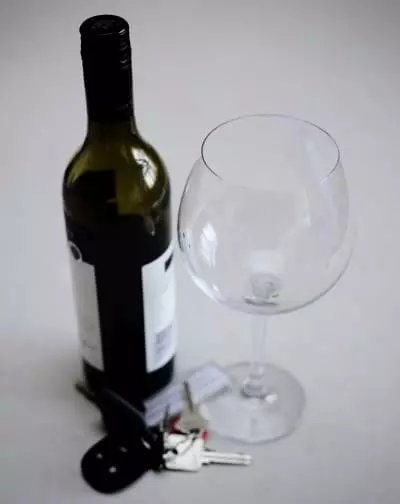[ad_1]
Today, the Supreme Court docket of Canada launched the choice of R. v. Boudreault, 2012 SCC 56. Justices LeBel, Deschamps, Fish, Abel, Moldaver and Karakatsanis JJ. concurring in causes and Cromwell J. dissenting. The case units out the regulation in Canada for what it means to be in care and management of a motorcar if one is impaired on the time.
Sleeping with no intention to drive. Is that care and management?
On this case, the accused was discovered falling asleep within the driver’s seat. Extra particularly, the accused requested somebody name a taxi for him after an evening of ingesting. Whereas ready for the taxi, he began the engine, turned on the warmth, and fell asleep. It was a chilly February night. When the taxi arrived, the motive force known as police and he was subsequently charged with having care or management of a motorcar (1) whereas his means was impaired by alcohol and (2) with greater than 80 mg of alcohol in 100 mL of his blood, opposite to ss. 253(1)(a) and (b) of the Legal Code.
At trial, he was acquitted on each counts. Nevertheless, the Court docket of Enchantment allowed the Crown’s enchantment, and put aside the acquittals and entered convictions. The query the Supreme Court docket was required to find out is whether or not or not that is care and management of a automobile, and to reply the query of whether or not a threat of hazard is an important ingredient of the offence.
What does care and management of a motorcar imply underneath Canadian regulation?
The Supreme Court docket discovered that to ensure that an individual to be in “care or management” of a automobile, as outlined by s. 253(1) of the Legal Code, there parts of the offence embrace:
- an intentional course of conduct related to a motorcar;
- by an individual whose means to drive is impaired, or whose blood alcohol degree exceeds the authorized restrict;
- in circumstances that create a practical threat of hazard to individuals or property.
What’s fascinating in regards to the third part is that up up to now, there was appreciable controversy over whether or not such a component existed and subsequently required to be confirmed by the Crown. The evaluation can be reality pushed and the Crown must show that “the chance of hazard should be life like and never simply theoretically doable.” The Supreme Court docket was very fast to level out that this isn’t one thing any individual can depend on. They held that “in the absence of proof on the contrary, a practical threat of hazard will usually be the one affordable inference the place the Crown establishes impairment and a gift means to set the automobile in movement.” In impact, it locations a burden on the defence to adduce proof to show that there was no life like threat of hazard that the choose can then take into account amongst all different components.
The Supreme Court docket overturned the conviction entered by the Court docket of Enchantment and restored the acquittal entered by the trial choose.
Within the authorized evaluation, the Court docket adopted a line of authority from the provincial courts together with: R. v. Wren(2000), 47 O.R. (3d) 544, depart to enchantment refused,
[2000] 2 S.C.R. xii (and once more, extra just lately, in R. v. Smits, 2012 ONCA 524, 294 O.A.C. 355); R. v. Decker, 2002 NFCA 9, 209 Nfld. & P.E.I.R. 44, depart to enchantment refused, [2002] 4 S.C.R. vii; R. v. Burbella, 2002 MBCA 105, 166 Man. R. (2nd) 198; R. v. Shuparski, 2003 SKCA 22, [2003] 6 W.W.R. 428, depart to enchantment refused, [2003] 2 S.C.R. x; R. v. Mallery, 2008 NBCA 18, 327 N.B.R. (2nd) 130.
In arguing in opposition to defences of this sort, the Crown will likley depend on paragraphs 34 t0 25 that states:
[34] The danger of hazard should be life like and never simply theoretically doable: Smits, at para. 60. However nor want the chance be possible, and even critical or substantial.
[35] To require that the chance be “life like” is to ascertain a low threshold according to Parliament’s intention to stop a hazard to public security. To require solely that the chance be “theoretically doable” is to undertake too low a threshold since it could criminalize unnecessarily a broad vary of benign and inconsequential conduct.
So though the brink is low for the Crown, and as indicated above, prima facie the case, it does open the door as much as defence legal professionals to argue that there was no life like likelihood of hurt. Examples may subsequently embrace: caught in a snow drift and attempting to get heat, a automobile that’s not operable, sturdy proof to recommend no intention to drive and security mechanisms to make sure that, being discovered within the passenger seat, and so on.
Considering of it one other means: “an accused discovered within the driver’s seat will likely be presumed, as a matter of regulation, to have care or management of the automobile, until the accused satisfies the court docket that she or he had no intention to drive — an intention that, pursuant to Ford, isn’t an important ingredient of the offence.”
This can be a essential choice to these defence legal professionals, like myself, who routinely defend people charged with being in care and management of a automobile whereas impaired and/or over the authorized restrict.
[ad_2]
Source link

